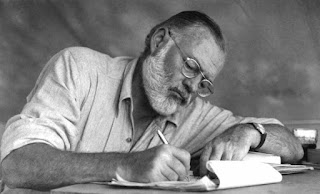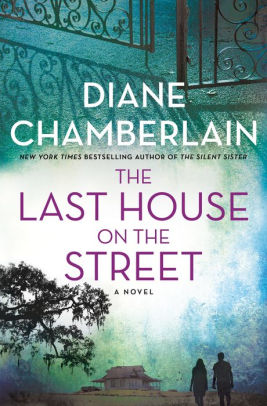I intended to write about a Mexican thriller/mystery series, but after reading Mark Thielman’s column, I considered an article in his shadow, and then Friday Joseph D’Agnese came along with his advice about organizers and notebooks. Okay, okay, so I have the attention span of a squirrel and… something, something.
That’s why James Lincoln Warren dubbed me the ADD Detective. If anyone needs an organizer, I do, and thank God for Rob Lopresti and Janice and secretaries and assistants and adjutants. I’m worse than a squirrel burying his nuts and…
Hey! Eve! Stop giggling! You too, Melodie. Oh Liz! Y’all are a klatch of incorrigible children.
Anyway, before I was so roooodly interrupted… What was I saying? Oh, squirrels. I’d make a terrible squirrel because I don’t remember where I put things.
I’m aware of the problem (I should be by now), so I consciously think: Where should I put this or that so I can find it next time?
I come up with a genius place to store it.
And then I can’t find it.
My chosen tuck-away place was so brilliant, I’ve completely lost it.
Assisted Living
I’m fortunate to live in this age. As a child, I built my first simple ‘computer’ (a gated circuit) and started programming in my teens. I realized computers could help with some my attention deficit problems:
- Computer-storable items would reside in one place… a computer.
- They would be searchable. Hey Google: When is girlfriend's birthday?
- They could help me organize: calendars, contact lists, homework.
So there I was, a teenager using half-million dollar computers to save my name/address book. Life was good. Until the computer crashed. But still…
Aids, Aides, and Accessories
Computers can't solve everything. I can't yet say, "Hey Google: Where are my glasses?" which is why I keep a half dozen pairs scattered around the house in 'known' locations. Damn squirrels.
But we come ever closer. Apple markets AirTags, which look like half-size key fobs. Attach it to my key ring and, if I happen to misplace my keys, I can say, "Hey Siri: Where are my keys?"
(You might think I often lose my keys or wallet, but I don't. I have one place for each and I'm well-trained to put them in place.)
They're also useful for items that might be potentially stolen– purses, briefcases, luggage, someone’s wandering child. ("Mrs Lundin, dis is Benny de Snatcher. We got your boy. How much we gotta pay if we return him?")
Aids, Aides, and Assistants
Amid all this verbal perambulating, I offer my methods of using computers to help organize and write. Sure, we know the obvious: proper formatting (real tabs, double space, etc.), spell checking and sometimes grammar. That’s handy, but computers shine at research.
Sure, we have Google, Bing, Yahoo, Duck-Duck-Go, and DogPile, but I need to collect notes. I want to copy articles in case they go away. What to do? Excel and text processors are 'okay', but I wanted more than a digital filing cabinet. Cross-platform could be a great goal too: Mac, Windows, Android, iPad.
Diigo
I snapped awake one night (all right, one afternoon) and realized I could apply my programming background to create sort of Post-It notes on web pages. Before I began, I swept the web to find out if anyone else had hit upon the same idea, and it’s happened indeed. Some very smart person not only had created web page Post-Its, but also provided marker-style high-lighting! Better yet, they introduced a free version.
Pocket
What if I wanted to organize and store articles? I tried Pocket. My phone and tablets had limited space back then and Pocket was large, comparable to OneNote. That might not be a concern today, but back then when I needed the space, I deleted it.
Like OneNote and similar to Diigo, Pocket plants a Pocket icon in the menu bar. To bookmark or copy an article, click on the Pocket icon.
EverNote
I can never remember the name of the EverNote app, only its logo, an elephant, which presumably never forgets. They're light on free storage, but it is popular with students. Check it for yourself.
OneNote
Microsoft sells OneNote and way back, they should have been ashamed. Using it brought back those caustic jokes that Microsoft uses their customers to stress-test their programs, and Microsoft doesn’t recognize a bug until every single user on the planet has reported it. Oh Lord, OneNote was horribly buggy. Ofttimes the Android version wouldn’t save articles. On other platforms it lost data, but when following up, I found a remedy of sorts: Sync the data each time the program opens. This prevents the Android version trampling on the iOS data and crushing the laptop versions.
Microsoft spent years to get a handle on OneNote problems. These days it’s fairly clean, although I continue to hit the Sync All command whenever I open it. Reading between the corporate lines, Microsoft would love to sell the product but it had been so troublesome, they permit customers to use it for free. OneNote fits in nicely with the paid Mac version of MS Office, so I’ve settled upon it.
Its interface is idiosyncratic but no longer erratic. Unlike other offerings that copy articles and not much more, users can create notebooks, sections within each notebook, and pages within each section. Pages can contain pretty much anything: rich text, pictures, audio recordings and videos, snippets of conversation, and sketches you might make. Clicking the OneNote icon in the menu bar or the Share button on mobile devices offers a number of choices for saving articles. It stores data in Microsoft’s OneDrive cloud, which allows the user to access it multiple ways.
I create notebooks for each project I’m working on, a notebook named SleuthSayers that contains sections on news (with a subsection for Florida news), writing, fraud, and miscellaneous notes, and a personal notebook with multiple sections. The interface is quirky, but you may find it suits you.
But wait, there’s more!
Keep
One product that didn’t pass my research test I keep around… In fact, it’s called Keep introduced by Google a few years ago. When they proposed discontinuing it, a public outcry kept it alive.
Compared to the other programs above, it’s not especially suitable for writerly research, but it is perfect for personal use in several ways. Its interface resembles those Post-Its we spoke of above. Double-clicking on a note expands it for better readability and editing. Notes can use any color with or without to-do-type checkboxes. Checkbox items can have sublists.
I keep (see what they did there?) a couple of general reminders, technical notes I picked up whilst wandering, security alarm codes for friends (without personal identifying information), field notes, a couple of items to ask my doctor on the next visit, library book list, and shopping lists… multiple checkbox shopping lists for groceries, hardware, Costco, Walmart, and so on. Moreover, many of them are linked to friends, so whoever arrives at a given store can pick up items for me or vice versa. If one of us thinks of an add-on item, we enter it on our device and it appears automatically on theirs.
Note: The above link is the general Google Keep page where you can download mobile apps. To visit the web page for notes from your computer, you’ll use:
Bad News / Good News
Common to all these programs, if you lose your phone or drop your tablet off a Pacific Coast cliff, your data is still available. And it all can fit in your pocket.
Have you tried these? What do you think?



.jpg)




























